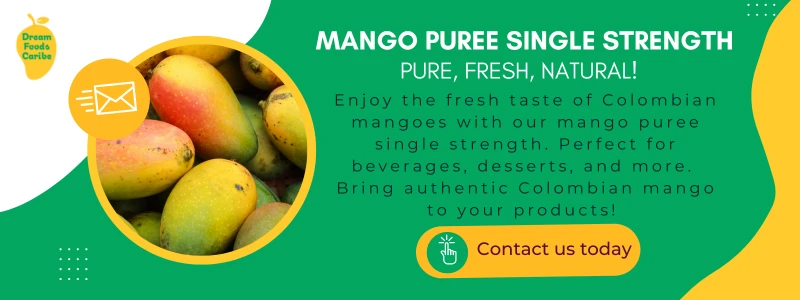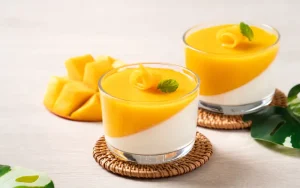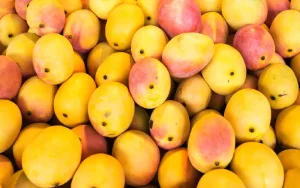Today, the natural trend is growing more and more among consumers. For this reason, the food industry has opted to use inputs with natural fruit, such as purees, in order to provide the natural flavor they are looking for. Moreover, they use these to prepare fruit juices, ice creams, jams, and other preparations such as mango jelly and mango sauce, as they provide important advantages. Their use improves the sensory characteristics of the final product and helps to maintain its nutritional properties (Juarez, 2020; UNDP, 2023).
Certainly, the industrial procedure for preparing mango-based sauce for commercialization is as follows.
Industrial process to prepare mango sauce
Mango is a fruit with fleshy pulp and sweet flavor. It stands out for its nutritional properties and ease of processing. It is ideal for use as a main raw material or as an input in the form of puree to make this sauce. To do so, it is necessary to obtain a homogeneous mango puree and prepare the sauce with the following processes (Camacho and Gelvez, 2018; Padilla et al., S.f.; UNDP, 2023
1. Sifting to obtain a homogeneous mango puree
To elaborate the sauce, it is necessary a process of sieving the fruit pulp. This is achieved using centrifugal action equipment with a fine mesh. It sieves the pulp to remove undesirable particles and obtain a homogeneous mango puree—something mango puree suppliers specialize in delivering, thanks to controlled processing standards.
2. Addition of additives in mango sauce
You should add additives to the puree to extend the shelf life of the final product. One of them is citric acid, which acts as an acidulant to lower the pH and prevent the growth of microorganisms. Another is ascorbic acid, which acts as an antioxidant to prevent color change in the final product.
3. Heat treatment during manufacture
This sauce requires heat treatment for its manufacture. The puree undergoes a pasteurization process between 80 – 95 °C for 30 minutes to maintain its organoleptic characteristics. Once this time has elapsed, the operation completes with rapid cooling to a temperature of 5 °C. This is done to create a thermal shock and inhibit the growth of microorganisms that can survive the heat.
4. Mango sauce cooking process
After pasteurization, you add the remaining ingredients such as sugar, water, pectin, salt, thickener, preservative, and coloring to the sauce. Once you mix all the ingredients, you cook the sauce at 90°C for 10 minutes. In some formulations, mango concentrate suppliers may offer solutions that provide a more intense flavor or cost-efficient alternative depending on the desired product profile.
5. Filling and packaging of the final product
Once it’s ready, immediately hot pack the sauce. Use clean metal or glass containers with lids, flexible containers, or aseptic bags. This is important to ensure the quality, airtightness and safety of the product. In this way, it can preserve its nutritional qualities and meet customer requirements. To sum up, mango sauce requires an industrial process for its manufacture from the fruit puree. In addition, these processes ensure the quality and shelf life of the final product. Among them, the addition of additives and the thermal and cooking treatment are key to achieve a quality product. It is a very versatile sauce that you can use for desserts such as mango cake or mango pudding, among other preparations.
Bibliographic references
Camacho, J. and Gelvez, V. (2018, June 21). Elaboration of a mango-based dressing sauce. University of Pamplona, Spain.
Juarez, C. (2020, May 7). Naturally sourced and safe foods: future and market development. The Food Tech.
Padilla, M.; Campos, M.; Larios, I. and Villanueva, S. (S.f.). Elaboration of mango-based products. CIATEJ.
UNDP (2023). Cultivation and commercialization of mango.







